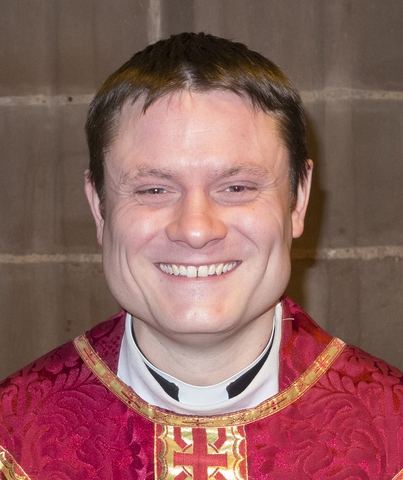
February News From the Clergy
31 Jan 2020 • From the Clergy
As he lay dying at Newark in October 1216, his authority in tatters and his realm engulfed by civil war, King John made his will. In it, he stated his desire that his body be ‘buried in the church of the Blessed Virgin and St Wulfstan at Worcester’. His original intention had been burial at Beaulieu Abbey, a house he had founded and whose monks desperately sought his corpse, but by late 1216 Hampshire was deep in enemy territory. So John, along with the earliest surviving English royal will (still held by the Cathedral Library), made his last journey to Worcester, secure and dependable, to be laid to rest beside the last Anglo-Saxon bishop and his patron saint, in a tomb he still occupies.
Yet John was actually lowered into a grave located beside two of the three bishops of Worcester who had been canonised. Until the vandals of the Reformation did away with the saints’ shrines - even Henry VIII’s thugs would not dare to destroy a royal tomb in the cathedral where the king’s brother had been buried a few years earlier - King John’s tomb lay between those of St Oswald and St Wulfstan. Despite this, the subsequent centuries have treated the two saints very differently. Whereas St Wulfstan has been widely recognised and is a popular local saint, Oswald has been largely forgotten. Wulfstan’s feast day (19 January) merits a lesser festival in the Church of England calendar; Oswald’s (29 February, or 28 February in non-leap years) does not even feature.
However, Oswald does not deserve to languish in obscurity, for he made an important contribution to both local and national Christian history. Scandinavian by background, the nephew of Archbishop Oda of Canterbury (941-58), and for some years a monk in Fleury in central France, Oswald was a product of the mixture of cultures found in Anglo-Saxon England and succeeded to the bishopric of Worcester in 961. Together with the man he replaced at Worcester, Dunstan (translated to Canterbury), and Bishop Æthelwold of Winchester, Oswald was key in the tenth-century reforms which revitalised a church recovering from a century of Viking attacks, efforts for which all three would attain sainthood.
It seems likely that none of them were necessarily the most pastoral or friendly of men – Æthelwold in particular emerges as a rather unlikeable disciplinarian – but they were trying to bring new faith and hope back to an English church which had suffered greatly and was in desperate need of rebuilding and a new direction. With the support of King Edgar, this trio were responsible for founding or re-founding a number of Benedictine monasteries and reviving monasticism.
At Worcester, Oswald was an active and committed bishop. He changed the cathedral from a secular one to a monastic one, building a new cathedral-monastery dedicated to St Mary, replacing the old one of SS Peter and Paul. The monastery survived until the Reformation, while the dedication remains alongside the later addition of Christ. Some traditions also trace the foundation of St Oswald’s Hospital (now the almshouses) back to Oswald himself.
When Oswald became archbishop of York (971), he continued simultaneously as bishop of Worcester, a richer diocese, until his death at Worcester in 992. Buried in his new cathedral, he was quickly canonised and moved to a more splendid tomb, in which he still lay when King John became his neighbour 200 years later. Wulfstan may have replaced Oswald’s cathedral and achieved greater renown, but his success built upon the work done by Oswald and others a century earlier.
It may seem a strange topic for a magazine letter, but Oswald’s proper day only features in leap years, and his story is a reminder of how the history of our faith is built upon the stories of numerous people who responded to the call of their times.
Too often, we overlook how the Christian faith is not an ossified, unchanging text, but rather something endlessly changing and found in living people which changes across the centuries in response to how we perceive God acting in different periods of human history. Alongside the saints of great fame, it is worth remembering those who made a difference on a smaller stage.
Phil